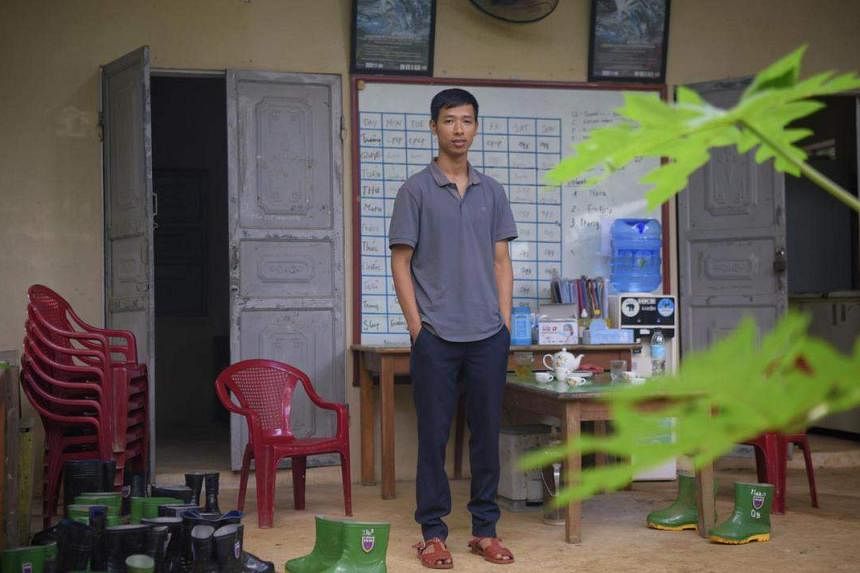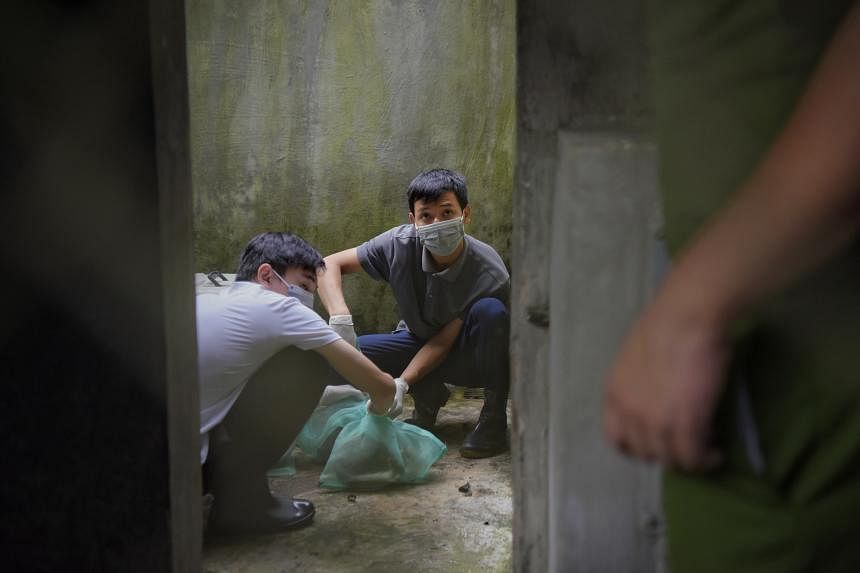NINH BINH PROVINCE, Vietnam - Mr Tran Van Truong, 29, had plans to spend time with family in Hanoi – about a two-hour drive from where he lives and works – one weekend in September, but missed his bus due to an unexpected “delivery” at his workplace.
Four ferret badgers had just been rescued by local policemen from the fate of ending up on someone’s dinner table.
Mr Tran, who works at a conservation group’s rescue facility in Cuc Phuong National Park, decided to focus on the animals first and worry about getting to Hanoi later.
As captive coordinator at Save Vietnam’s Wildlife, Mr Tran is deeply involved in the rescue and rehabilitation of animals saved from the wildlife trade.
The soft-spoken saviour of many of Vietnam’s wild animals said his love for nature was nurtured from his time spent in the forest during his childhood. It was also then that he learnt to value the forest for its ability to provide his community with food.
“When I was a child, many people in my village used to go to the forest to hunt animals. And I used to do the same,” he said.
But things have changed over the past decade, he observed. People from the city and other countries are adding to the demand for wild animals, causing wildlife populations to decline.
“I was lucky to have had the chance to go to university to learn more about nature and the impact and the role of each species in the forest. That’s why I take action to protect them,” said Mr Tran, who majored in forestry at a university in Vietnam.
Pangolins – ant- and termite-eating mammals that have been poached for their scales to the brink of extinction – are the pest controllers of the forest, for example.
“They dig as they look for ants, and that is good for the soil and helps trees to grow,” he said.
Civets, which are often trapped so that they can be used for coffee production, are gardeners of the forest, helping to spread the seeds of the fruit trees whose fruits they consume.
Mr Tran strongly believes that education is key to helping people living near forests recognise why wildlife needs to be protected.

In July, the Intergovernmental Science-Policy Platform on Biodiversity and Ecosystem Services – the United Nations’ panel of biodiversity experts – released a report that found that the accelerating global biodiversity crisis, with a million species of plants and animals facing extinction, threatens nature’s contributions to people.
This is as billions of people benefit from the use of wild species for food, energy, recreation and inspiration, among other things.
“Over-exploitation is one of the main threats to the survival of many… species in the wild,” said Professor John Donaldson, one of the co-chairs of the report.
“Addressing the causes of unsustainable use, and wherever possible reversing these trends, will result in better outcomes for wild species and the people who depend on them.”
Mr Tran said many people still do not understand the importance of having healthy wildlife populations in the forest. “So bringing them to the forest, and going to schools to teach them more about nature, about the animals, will be good,” he said.
Outreach and educational programmes are a major area of focus for Save Vietnam’s Wildlife, on top of other activities such as conservation research, wildlife rescue operations and conservation breeding activities to replenish Vietnam’s forests.
Its rescue facility in Cuc Phuong National Park, for example, houses a visitor centre where people can learn about the various mammals in Vietnam’s forests and the threats that they face.


